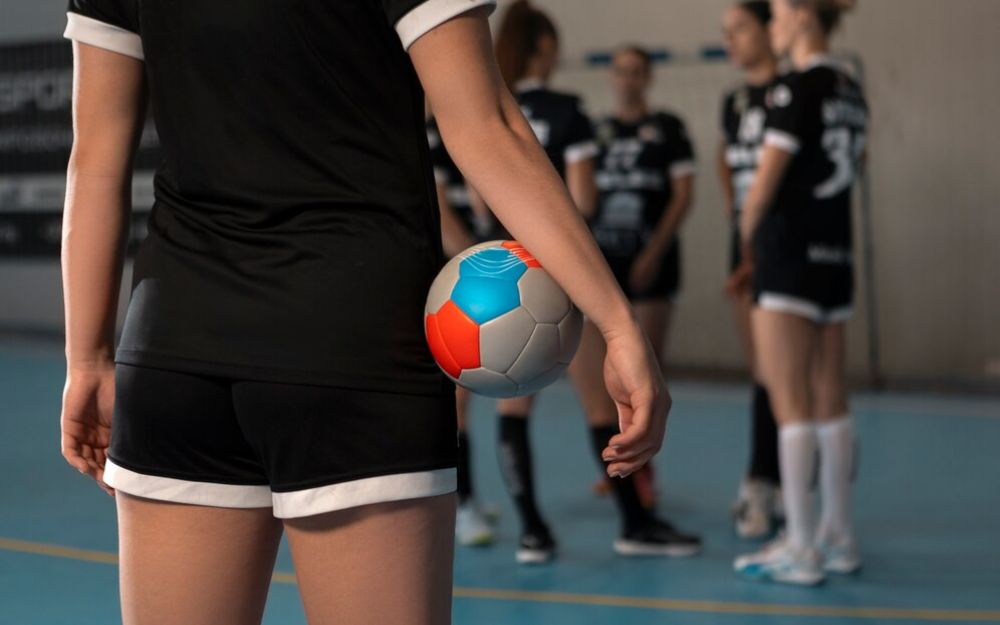The ability to defend properly within netball remains an essential skill that determines the final results in matches. Supporting defensive strategies enables teams to block opposing goal attempts while interrupting their offense and seizing back control of the ball. Defending a netball demands the execution of delaying, denying, and directing strategies among players. Each defensive phase will be analyzed with detailed methods of defending in netball, and the council’s netball rules for defense will be explained throughout this article.
How to Defend a Netball?
To successfully defend in netball, a player must demonstrate speed, agility, situational awareness, and tactical placement of their body. Defenders need to see their rivals’ actions before adopting solid-facing positions to shut down passing attempts and defense efforts swiftly. The following sequence enables effective defense in netball:
- Your steady defensive position includes distributed feet at shoulder distance while having bent knees and outstretched arms for immediate responses.
- Being directly next to your opponent improves your marking ability through the restriction of their passing technique as well as shot execution.
- Quick foot movements create blocked space to prevent passing opportunities and bring about errors.
- Intercepts and jumps should be timed based on playing observations for successful interceptions.
- Position yourself correctly to block the opposing team from executing passes or shooting attempts legally.
Netball’s defense prowess becomes stronger when players learn and apply these defensive techniques within the game.
What is Stage 1 Defense in Netball?
Netball defense begins through Stage 1, which is officially labeled as the delay stage. The main goal at this point consists of slowing down attacking plays to restrict possible actions from the opposing team. The successful accomplishment of defending in netball means strategic body positioning combined with blocking opponents’ movement paths.
Key strategies in stage 1 defense:
- By facing your opponent directly, you will maintain your position forward and restrict their moment while they are between plays.
- Defenders should extend their arms for awareness blockage and offensive blocking.
- Your movement should be lateral to follow your opponent while forcing errors from their side.
- The spacing between defensive players should be minimized in order to cut off passing possibilities.
Defenders implement these techniques to create barriers that stop attackers from reaching their goals during play.
What is Stage 2 Defending in Netball?
At Stage 2 of defending in netball, denying space plays a crucial role. During this phase, defenders should challenge their opponents to intercept their ball possession or pass attempts. The defensive player should use advanced anticipation and rapid foot movements while remaining alert to game developments in this stage.
Key strategies in stage 2 defending:
- The essential action for defense entails keeping close proximity to the opponent by staying within one arm’s reach.
- During play observation, keep an eye on approaching attackers before choosing your defensive stance.
- Defenders should move into passing areas and demonstrate quick movements to capture the ball.
- Close physical pressure against opposition players will make them hurry their passes and produce incorrect shooting actions.
The successful execution of stage 2 defending in netball creates both goal-scoring prevention and improves the chance for players to regain possession.
What is Stage 3 Defending in Netball?

During stage 3 of netball defense, the main objective is to establish control of the game. Defenders push attackers into optimal zones during the last phase, which allows them to control the play from their perspective.
Key strategies in stage 3 defending:
- You should push attackers toward the sidelines to diminish their offensive possibilities.
- A defender should use their position to dictate where the opposing team goes through movement control.
- Players should form double-teams with their teammates to pressure essential opponents, which can generate turnovers.
- The team should develop offensive actions after obtaining control of the ball.
Defenders who dictate the game receive an advantage over opponents while making it difficult for opposing teams to execute their plans.
What Are The Rules for Defending in Netball?
Netball defenders should perform their defensive tasks according to the sport’s rules to prevent receiving penalties. The comprehension of regulations allows defenders to conduct their defenses effectively through proper methods that preserve fair play during competition.
Important defending rules in netball:
- During team possession, players in defense must stay no less than three feet (0.9m) away from the ball handler at all times.
- Physical touch that interrupts an opponent’s movement or balance during play will receive a penalty.
- Defenders remain limited to blocked paths using their legs and arms when the obstruction rules apply to them.
- Players who defend must remain throughout their specified court area while playing.
- According to the held ball rule, defenders can use this rule to apply pressure on attackers until they exceed their allowed three-second ball hold.
Players who respect these rules will decrease their risks of receiving penalties unless they need to defend their side actively.
Conclusion
Netball players who excel in delaying, then denying, and finally dictating their actions gain complete control of matches by blocking offensive scoring opportunities. The learnings acquired through the practice of these defensive stages directly advance your ability to play netball defense. The correct application of defensive rules helps defenders achieve important roles that contribute to team victories.
The right equipment for performance brings equal importance to skill development in achieving outstanding results. High-quality sportswear exists at our Netball Polo – Elite Paneled. The polo delivers optimal discomfort together with peak performance, making it an excellent choice for netball players at every playing level. Shop now to upgrade your netball kit today!
Looking for team uniforms? Request a quote and get custom-designed netball apparel for your squad.


